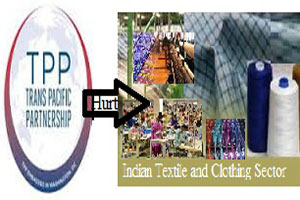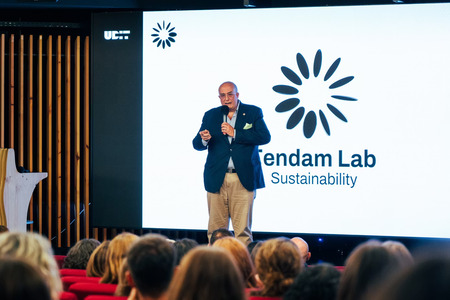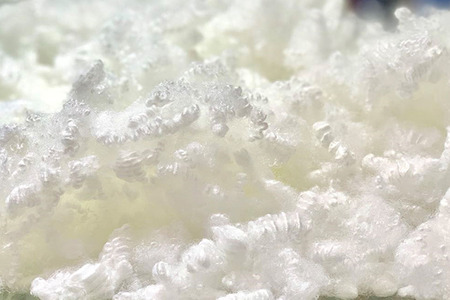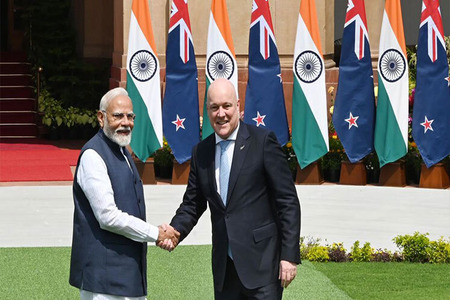
Indian textiles sector likely to get hurt by TPP
YarnsandFibers News Bureau 2016-08-12 12:00:00 – New DelhiTextile and clothing sector accounts for roughly 5 percent of India’s GDP, 15 percent of its industrial output and export earnings and provides livelihood support to 55-60 million people directly or indirectly. With India not a party to the Transpacific Partnership Pact (TPP) comprising Australia, Brunei, Canada, Chile, Japan, Malaysia, Mexico, New Zealand, Peru, Singapore, Vietnam, and the US. TPP will hurt India’s trade with its most important export market — the US.
As the US is a key export destination it will have serious implications for India’s textile and clothing sector especially post-Brexit turmoil in Europe, as it will further increase India’s dependency on US markets.
When it comes to export of readymade garments and made-ups, the US alone accounts for over 30 percent of India’s total exports. TPP will affect textile and clothing sector of India (and of all non-TPP member countries such as Brazil or China) in two ways:
First, exporters from TPP member countries will get preferential access in the US market vis-Ã -vis the exporters from non-TPP member countries like India.
This will put India’s apparel exports (to the US) at a disadvantage as the US import duties on apparels are quite high with average duty ranges around 7.9 per cent and duties on many clothing items are as high as 32 per cent as per WTO database.
Secondly, a key feature of the TPP, ‘yarn forward rule’, makes it mandatory to source yarn and fabrics used in making clothes from any or a combination of TPP countries to avail duty preference. This is likely to disrupt regional and global supply chain in textile and clothing.
Thus, YFR will induce garment manufacturers in the TPP countries to source their inputs from TPP countries at the cost of non-TPP countries such as India or China even if the suppliers in TPP regions are not the least cost. This will be a clear case of trade diversion i.e. moving trade away from more efficient producers to less efficient producers.
Already India’s textile and clothing sector is under severe pressure from slowing demand in key export markets, and backdoor entry of Chinese goods via Bangladesh under SAFTA and from other LDCs under DFQF schemes that allow duty free import of garments from Bangladesh and other least developed countries such as Myanmar into India.
Exclusion of India’s clothing products from US GSP benefits is yet another source of comparative disadvantage for the sector.
If this was not enough, to comply with its commitments to WTO, India will soon have to phase out its export incentives — latest by 2018. India has already achieved a per capita GNP of $1000 at 1990 prices. India’s global export share in textile and clothing has already crossed 3.25 per cent threshold required by WTO to be termed as export competitive with obligation to phase out export subsidies.
Only 17 per cent of textile and clothing exports under NAFTA and Central American Free Trade (CAFTA) have gone through yarn forward rule even then the US trade negotiators have incorporated it in the TPP. Clearly, the move seems to be protectionist aimed at reviving American indigenous textile industry at the cost of foreigners.
However, insistence on YFR will limit the freedom of clothing retailers to choose their suppliers and minimise their sourcing cost.
That explains the strong opposition of clothing retailers (e.g. JC Penny, Levis or Gap) and their associations (e.g. TPP Apparel Coalition) to the yarn forward rule. To deal with this, the US trade negotiators have come up with the idea of ‘short supply list’ — that will give some flexibility to clothing retailers in sourcing their inputs (which are not available in TPP region) from non-TPP countries either temporarily or on a long term basis. However, that relaxation is not sufficient enough.
India can’t ignore the most lucrative US market that accounts for roughly one-fourth of its apparel exports i.e. $3.5-4 billion, especially when India’s merchandise exports have been declining for the last 18 months in a row though exports picked up but only 1.27 percent.
Given the prevalence of textile exports in India’s total merchandise exports, reviving exports will require reviving textile and clothing exports. That calls for devising suitable trade strategy to deal with adverse impact of TPP.
India’s best bet can be multilateral trade liberalisation of heavily protected textile and clothing sector. Unfortunately, that’s not moving given the American disinterest in WTO and current sentiments in most developed countries are against further trade liberalisation.
Joining TPP can help India’s textile & clothing sector, but accepting WTO plus proposals on intellectual property, investment protection, services and state owned enterprises (SOE) as envisaged under TPP will not find favours among either policy makers or India Inc.
Another option would be to relocate part of India’s textile production facilities to countries like Vietnam which is a party to TPP or in a least
developed African country such as Ethiopia which has duty free market access to the US. However, exercising this option would also mean relocation of jobs to Vietnam or Ethiopia in addition to other risks associated with investing abroad. However, that would be against the spirit of Make-in-India.
Moreover, likely loss in export of textile items to TPP countries will have to be compensated by gains in other markets. Here, tweaking the rules of origin to stipulate utilisation of yarns and fabrics of Indian origin as a pre-condition for allowing duty free import of garments from Bangladesh and other LDCs will help India’s fabrics export.
It will also check backdoor entry of Chinese fabrics into India via countries like Bangladesh.
Textile and clothing sector is heavily protected in Mercosur countries and maintain import duties of as high as 35percent on many textile items. Inclusion of textiles under India-Mercosur PTA will improve access to Latin American markets and somewhat compensate for loss of existing export market because of TPP.
India also needs to push for reduction Chinese import duties on apparel under RCEP as going forward China can be a high potential export destination for India’s apparel items given the rising wages and per capita income in the country despite growth slowdown. RCEP platform can also be used to improve access to Australian apparel import markets.
Market Intelligence
Ask for free sample Report

experience
Customer Base
dedicated team
Countries Served Worldwide









